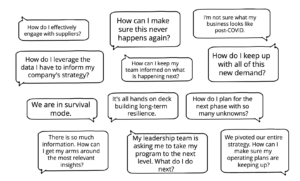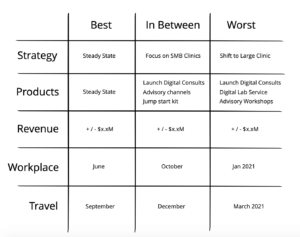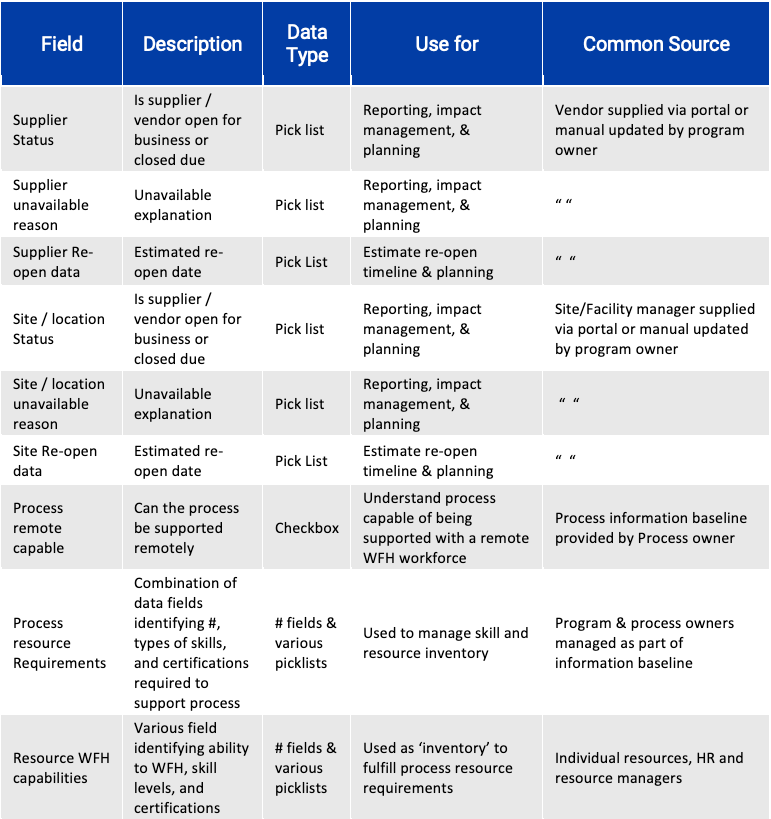
While this is clearly not the first time we have experienced a crisis, this is one we face with unprecedented connectivity and interdependence due to globalization and digitalization. This brings challenges, and also, learning experiences. While COVID-19 has had catastrophic impacts on many of the world’s greatest brands, the countless examples of humanity and resilience across the globe have been nothing short of extraordinary.
Research indicates companies are falling into one of three categories as the pandemic took hold (and as the situation stabilizes into a new definition of normal).
- Survival: reducing current costs, planning for phased resumption of activities
- Sustaining: maintaining as close to normal operations in new environment
- Surge: leveraging new operating conditions to accelerate existing business model or reinvent one to better position for growth
Regardless of the impact COVID-19 has had on your business operating environment, adaptable and resilient brands are better primed to survive and learn how to thrive during a crisis. Organizations need to be focused not only on the operating health of the business, but on the essential elements of the organization – key relationships with customers, employees, third parties, and other stakeholders. All these essentials elements are the building block for operational resilience.
What are we hearing from our prospects and customers?

While great organizations always had a stake in innovation, the evolving pandemic situation is pushing companies to innovate at a much faster pace – with some of our customers reporting innovating in less than 24-hour cycles. The pace of digital transformation is inevitably accelerating as the physical world quickly becomes highly virtualized. As the global community has come together in the wake of crisis, brands are evaluating the social contract they have with their customers. With new models – companies are innovating alongside customers, governments, and competitors on shared social agendas and enterprises.
Evidence from prior recessions suggests that organizations taking the necessary steps to build agility into their response are able to capture up to 3x more market share through a downturn, tending to rebound much faster and stronger when good times return, for a lasting competitive gains.
There are steps you can take now to prepare your team for the coming weeks, collectively building a new north star for your organization as restoration begins to take shape.
Leverage the data you are already collecting on consumption, pipeline, status of critical business services and product lines, and competitive intelligence. Then, overlay with situational intelligence about your internal operations. Conduct an assessment of your operating environment as well as what you are learning as an organization. Ask the following questions:
-
- Where are you continuing to perform well and able to meet demand for your services and products?
- Where are you facing concerns due to geographic risk, changing pandemic conditions, concentration risk, fluctuations in vendor risk management, product, or component availability, or other issues?
- Where have physical operations stopped, preventing you from performing critical business services? What are the potential timelines to resumption? Is there a way to further digitize these operations? What is the timeline to alternatives and what are the impacts?
- What impacts are you seeing from a staffing perspective? Have you fully implemented cross-training and succession measures? How does this impact your ability to service customers? What can be done to remediate these issues?
- Where are you seeing new needs emerge among your customer base? Where are they struggling? How can you leverage the tools at your disposal to better support them? Be creative with solutions, trials, and promotions to ensure your customers are seeing the most benefit from the products and services you provide.
- What are competitors and adjacent service providers doing in the market? Where are they succeeding?
- Where may there be issues with current products or services? Is it possible to reshuffle priorities or refocus efforts on addressing budding needs in an existing market?
- Are there adjacent markets you can serve with existing infrastructure and product lines?
- Can you leverage existing partnerships in new ways to expand your reach or offer new solutions to the marketplace?
Empower cross-functional teams to surface imperative insights that can inform your next steps as a business. Consider running a cross-organizational innovation or cost-reduction challenge to surface new ideas or approaches. Incentivize teams on revenue-generating ideas or cost-cutting measures. Recognition and appreciation go a long way in crisis times. Ballpark relative level of effort, impact on the business, and prioritize ideas for current and future state based on hypothetical scenarios. Include customers and third parties in the ideation phase, many of them will appreciate that you took the time to ask. Some of the best ideas will come from your customers, your teams closest to your customers, and your third-party partners. Invest in getting to know your customers more. On average, companies that knew the most about their customers going into the crisis were able to support their customers more successfully, change their strategy in line with customer needs, and insulate against losses
Anticipate what is coming next. Build for multiple scenarios. What are the key market and/or regulatory shifts that might happen in each condition? How might customer behavior shift and along what timeline? Further, how do you prepare your operations to respond appropriately? Test your hypotheses in an environment as close to real-life as possible. Consider engaging your customers and third parties in envisioning alternative paths to a new future. Based on the data available, determine what scenarios are most likely to occur. Revisit as new data emerges. For teams new to the process, start with a simple 5×3 grid and expand as you become more comfortable with the process and as new intelligence becomes available.
Scenario Planning Example:

Once you have narrowed the list of potential outcomes, set detailed action plans in place. Define a list of activities that must happen under each scenario. Assign ownership and expected timelines. Communicate regularly with key parties to ensure your stakeholders have an opportunity to inform the detailed set of actions and are prepared to respond when the time is right.
Define triggering conditions for each response and monitor your operating picture for changes. Use dashboards or other alerting mechanisms to signal your team for early signs of change. Meet regularly to review these and emerging signals that might warrant taking a different approach.
Consider what data you want to start collecting now to make better measurement possible as the situation and your organizational needs evolve. Some data points to you should be monitoring if you are not already:

The steps you take now are the foundation for the organization you will be in the future. In uncertain times, organizations making a difference matter more than ever. This is a defining moment. How fit-for-purpose is your firm in the post-COVID world? It’s up to you and your team to define and decide the course ahead.
Visit the Resilience Toolkit to see examples of how Fusion helps customers around the world manage across all time horizons of crisis, enabling a more prepared, agile, resilient enterprise. Learn more about pandemic related insights with Has Supply Chain Resilience Finally Come of Age Because of COVID-19? and PODCAST: Business Continuity in the Midst of a Pandemic.





